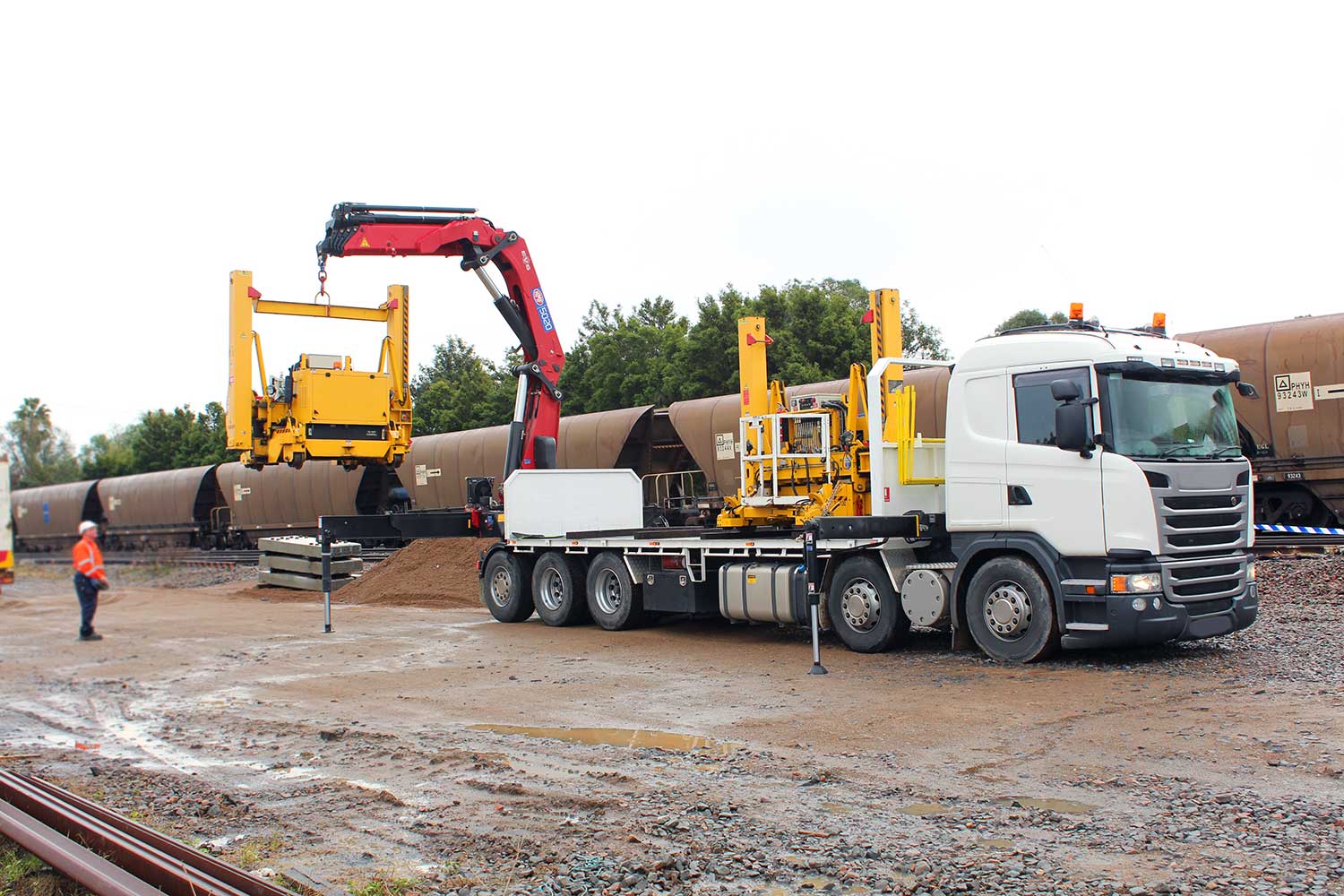Operating a loader crane is no easy feat, even in ideal conditions. It takes skill, precision, and a strong understanding of safety practices to handle heavy loads effectively. Now, add to the mix rough terrain, tight spaces, or unpredictable weather, and things start to get even trickier.
There’s a reason why it takes extensive training to operate a loader crane in Australia and why you need a High Risk Work Licence (HRWL). Factors like ground stability and wind speed determine whether an operation runs smoothly or becomes a serious safety hazard. Crane operators must stay alert and apply best practices for rigging and lifting while maintaining constant communication with their team.
Common Challenges in Operating Loader Cranes
There can be several challenges when operating a loader crane, especially in demanding environments. One of the biggest concerns is rough terrain and uneven ground, which makes stability a concern and increases the risk of tipping.
Another pain point is confined spaces. Sometimes you have tight urban job sites or even warehouses that require precision and careful navigation.
Then there’s the factor we can’t control—the weather. Strong winds, heavy rain, or extreme temperatures can affect visibility, control, and overall safety.

When a crane isn’t operated properly in these conditions, poor load handling and misjudgement can lead to serious accidents. Beyond personal injury, improper crane operation can lead to equipment damage and costly project delays.
That’s why understanding these challenges and knowing how to work within them is key. However, you need to possess the right skills, planning, and safety measures to keep things running smoothly, no matter how tough the conditions get.
Operating a loader crane in Australia requires extensive training. For cranes exceeding 10 tonne metres, operators must obtain a High Risk Work Licence (HRWL) and learn safety regulations at WorkSafe-approved providers in each state.
Preparing for Operations in Rough Terrain
When working on rough terrain, preparation is everything. Before getting started, a thorough pre-operation inspection is a must, which should include a thorough inspection for mechanical issues, an assessment of the ground conditions, a check of weather forecasts and ensuring all safety systems are in place.
On uneven surfaces, stabilisation should be the top priority, with both outriggers and stabilisers properly positioned. Always use additional support, like dunnage pads, to help distribute weight more evenly.
Using the right crane attachments improves efficiency and control. Specialised grapples, winches, or jibs can improve efficiency and control when lifting in these tricky conditions.
Pre-Operation Checks and Planning
Let’s look a little deeper into pre-operation checks to ensure that both the crane and the worksite are ready for safe lifting. As mentioned, operators should inspect the crane for any mechanical issues, including verifying fluid levels and checking stabilisers.
Beyond operating cranes themselves, assessing the load is just as important. The weight, centre of gravity, load limits and lifting equipment help prevent unexpected shifts or imbalances, especially when lifting heavy loads. However, your ground personnel also play a vital role in this.
They should be assisting with positioning and spotting potential hazards, including staying on top of weather conditions.
Working Safely in Confined Spaces
Limited space means every move must be carefully calculated to avoid collisions with nearby structures or obstacles. Again, it all starts with preparation and pre-assessing the workspace. This helps operators determine the best positioning for stability and reach while boosting confidence. That said, overconfidence leads to accidents. By combining strategic positioning with clear teamwork, operators can safely navigate confined environments.
Choosing the Right Crane for the Job
Different types of cranes serve different purposes, and choosing the right one can make all the difference in efficiency and safety.
Truck-mounted cranes
Mounted onto a standard truck chassis, these cranes offer mobility combined with heavy-lifting capabilities. They can be transported and set up quickly, making them an ideal choice for job sites requiring flexibility.

All-terrain cranes
Functional in both on-road and off-road conditions, all-terrain cranes offer versatility and high lifting capacity. Their multi-axle design provides stability, making them ideal for demanding job sites that require mobility across different surfaces.
Crawler cranes
For rough or uneven terrain, as we’ve discussed, crawler cranes provide stability with their tracked undercarriage, making them ideal for heavy-duty projects.
Gantry or overhead cranes
In controlled environments like warehouses and ports, gantry and overhead cranes excel at handling repetitive lifting tasks with precision.
Each crane type is designed for specific challenges, so factors like load capacity, reach, terrain, and environmental conditions must be considered. If in doubt, ask your trusted crane supplier for advice.
HMF Has the Solution
Operating loader cranes in challenging environments requires skill, preparation, and the right equipment. HMF Cranes has a long history of innovation and excellence in truck-mounted loader cranes, continually developing cutting-edge solutions to enhance safety and performance. You can learn more about HMF’s journey and legacy here.
For those looking for reliable, high-performance loader cranes, HMF Australia offers a range of solutions designed to tackle even the most challenging job sites.
Frequently Asked Questions
What are the environmental factors affecting lifting operations?
Wind, rain, extreme temperatures, ground stability, and visibility can all impact crane operations.
What are the environmental issues a crane may have?
Cranes can contribute to noise pollution, emissions, and potential harm to surrounding ecosystems.
What is the operator’s main concern during crane operations?
Crane safety protocols are the top priority, including preparation, assessment of construction sites, load stability, and communication with ground personnel.
What problems could arise during crane operations?
Equipment failure, unstable ground, adverse weather, miscommunication, and overloading can all lead to operational issues or accidents.

